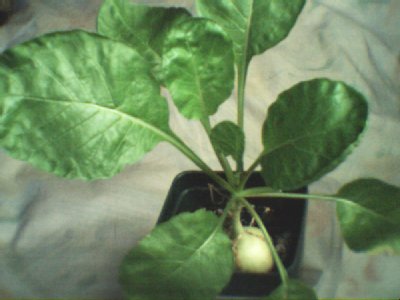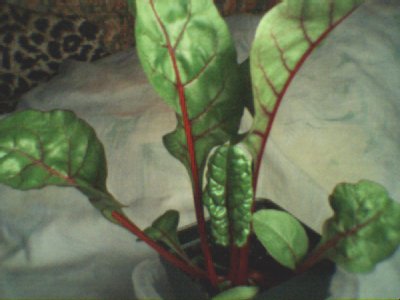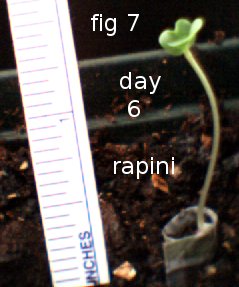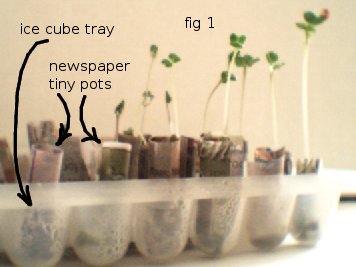If the world changes for the better, it will be the result of decisions made by individuals on a personal level. If we wait for salvation from government or corporate sources, it may never arrive. Many of us have been waiting too long. Now it may be already too late to save the planet. It comes down to you and me.
There are many things each individual can do. Sustainable technologies exist that can be used on a personal and local level. Many of these methods seem old and simple, as indeed they are. Others are not so primitive but are very healthy, like the democratic medium (so far) of the Internet.
Technology is not evil in and of itself. The problem is that science and technology have been hijacked by greed. But there are other ways to use technology.
Here is a list of things we can practice. It is incomplete. I deliberately leave out things like carpooling, walking, using public transportation, etc., because they have been flogged to death elsewhere. Other things, like the root cause of the planet’s problems, even the greehouse effect, being due to overpopulation, and the need to therefore limit our numbers, should be obvious to anybody who wakes up and starts to genuinely seek answers. Overpopulation is not a looming problem. It has been with us too long already. Instead, I list viable methods many people may have never given serious thought to.
Some are methods old to the planet, almost extinct, but new to the modern slaves living in a brainwashed stupor. Try what you can from the list. Add to the list if you can. Research, experiment and let the world know what you learn. I am trying to do the same.
I hope to go in greater detail in later installments.
Intensive gardening
Grow an intensive raised-bed vegetable garden organically. I was elated to learn there is even a way to reap from your garden in the cold of winter. This winter will mark my first winter gardening.
Instead of chemical fertilizers, pesticides and herbicides that have to be manufactured, purchased and transported, use organic fertilizer from your compost or worm bin. Instead of tap water, use water from your rain-barrel in your garden. It will be better for the plants because it is not chlorinated. You will save on your waterbill. The planet will benefit because energy was not expended processing and getting that water to you.
Insecticides kill not only bad insects but good insects. Good insects do pollination, eat bad insects, help in composting, and condition soil naturally for permeation by air and water.
Herbicides kill plants other than the ones targeted, Even weeds are useful to the organic gardener. Many weeds are edible and nutritious. Weeds are a green manure. Roots of some weeds bring valuable nutrients from deep in the soil where other plants could not reach. Composting these weeds releases nutrients on the surface where the plants we cultivate can use them again.
Agrochemicals leave residues harmful to people and planet. The use of these oil-based products destroys life in the soil. After the abuse stops, soil takes years to recover.
The agribusiness soil is merely a dead thing used to hold the plant upright, and it is barely good for that. The ability of the soil to hold water is degraded, making plants more susceptible to drought. Soil erodes and these chemicals run off as pollutants when it rains. This runoff is toxic to life in rivers and the ocean. The need for irrigation is greater, but irrigating with ground water is also harmful, causing salt-accumulation toxic to even the cultivated plants.
Let’s about-face, people. This is literally a dead end.
Composting
Maintain a compost pile. You can use local inputs costing nothing: lawn clippings, fallen leaves, cardboard, paper, kitchen scraps, weeds (carefully), manure from herbivores, etc. Do not use dog or cat manure because it may harbor disease that infects humans. I live in the city, so I also do not put dead animals in the pile.
There are several ways to compost, broadly known as hot and cold methods. A hot pile happens when the “greens” and “browns” (nitrogen and carbon sources, respectively) are mixed in proper proportion, the pile is not too small, has the right amount of moisture and is turned inside-out and upside-down frequently. Hot piles reaching about 140 F will sterilize many seeds and diseases.
Cold piles are piles that are missing some of the needed ingredients or methods that make a pile hot, but cold piles work too. A cold pile may not finish composting until more than a year has passed. A proper hot pile may be finished in only weeks, depending on what is in it.
A partially finsihed pile may be sifted through a metal screen or mesh. What ges through the screen may be useable but may have more weed seeds that are viable if the pile has not cooked hot enough. Even a cold pile can eliminate seeds, though. I have observed that conditions in a cold pile are ideal for seeds to sprout. But, once they sprout, the seedling will die if it is too deep to get light. And, if it sprouts on the surface, one pile turning will put the seedlings deep in the pile where they quickly become green manure!
As with worm bins, the compost bin will not stink or attract pests if it is done properly. Bury fresh kitchen scraps deep within the pile so they will not attract rats, dogs, etc. If your pile is in the city, you may also want to keep herbivore manure (from cows and horses) out of the pile, merely to control odor. You can use, instead, what is called “green manure”, which is typically a living plant that is freshly cut: grass clippings, weeds, etc.
Composting with worms
Vermiculture is another good basement project. Use earthworms to compost kitchen waste. Cut-up cardboard and newspaper are fine worm bedding. That makes less waste to burden landfills or be recycled outside your home.
When I tried this, I was not prepared for the incredible reduction in volume of the kitchen scraps after they were worked by the worms. They tranformed into little black dots, worm poop! The scraps and bedding became virtually unrecognizable as anyhthing other than good dirt. I was also amazed that I could detect no odor whatsoever from the liquid that drained from the worm bin, worm pee! It took my bin about a full year to mature to this level. That was a bit longer than I expected but I suspecct I did not start with as many worms as I thought I purchased. It’s hard to tell, and I was not about to actually count them. That would have stressed them after already being stressed by shipping.
I use this leachate and vermicompost to fertilze the organic vegetable garden and make potting medium for seed germination.
Composting with worms is not hard to do. Properly done, there is no sigificant odor and no problem with flies.
Water collecting
Use rain-barrels to collect water. This lessens energy use and load on municipal sewer and water supply systems.
Mosquitoes cannot use the barrel to multiply if it is properly constructed and screened.
If the barrels cannot be kept in the shade, the chance of becoming sour or stangant is reduced by periodically dipping out and pouring back some of the water. This gets more oxygen in the water, which is especially important on hot days. A simple trick to maintain freshness is to use an aquarium air-stone and pump in each problem barrel. The amount of electricity used is negligible. You might even find an air pump that will run off an electric solar cell. The brighter the sun, the faster will the pump oxygenate the water; no need for batteries or charging circuitry.
Do not drink rain water unless it has been sterilized by boiling. Remember that it came from your roof where it has probably carried down dissolved bird and squirrel droppings, dead insects, etc.
However, it is better than tap-water for watering your garden because it has no chlorine. You can wash the car (if you must have one), water the lawn, etc., saving money on your water bill. It is soft water because it has not run through the limestone of earth. Once boiled, it is good for washing where you need soft water.
If you don’t like the suspended particles that made it through the screen, a sand filter can be used to remove the particles.
Water filters
You can use sand filters to clean your rain water. There are several types of sand filter.
A coarse filter will quickly remove visible floating things.
The other, the slow-sand filter, is very special. It is a self-healing living organic filter that is capable of making water very clean indeed. It filters water at microsopic level, even removing diseases that affect the roots of plants. The fact that it is a self-contained organic niche with living things in symbiosis puts it, to my mind, in the same class as other personal survival technologies, like the worm comosting bin, the starter used in sourdough bread and the fermentation that makes wine and cheese.
As in the organic garden itself, the substrate becomes populated with beneficial organisms, leaving no room for harmful organisms to grow, even feeding off of them. It is interesting how this theme keeps recurring in the organic world.
The slow-sand filter works by allowing water to very slowly seep through a bed of sand. The filter is not viable until a community of living things inhabit the filter from the surface to several inches below the surface of the sand. They live on whatever they mangage to filter out of the water.
I use an air-lift water pump, driven by an aquarium air pump, to oxygenate and constantly circulate water in the filter, even when the filter is not being used. Also, some s-bend plumbing I use to keep the surface of the head water at least an inch above the surface of the sand at all times. This helps to keep the filter in good health. The life under the surface of the sand will die if it is allowed to dry even a little. But, even if that happens, after restoring the water level and allowing a few days or weeks of circulation, the filter will self-heal!
My first filter ran for over a year. I have never had a filter clog, but it is supposed to be possible. To clean the filter when it is clogged, stir up the surface to suspend the detritus in the head water. The sand quickly falls back. Dip off and discard the muddy looking stuff. Then wait several days as the surface heals.
The slow-sand filters I made produced pristine looking water with no coloration or visible suspended particles. I would not drink it, however, without boiling it. It may be perfectly safe, but I will not take a chance until I have more practice in this method. Someday, I plan to have the before-filter and after-filter water samples tested in a lab. But even if that sample tested clean there is a chance that a later sample would not be clean, especially if the surface of the sand was disturbed in some way after the sample was sent to the lab. The living surface of the filter may easily be damaged if, for example, plumbing going through the surface moves a little bit. So, everything should be rigidly constructed. I made my fliters using plastic storage containers like clean new 30-gallon trash bins and another out of a plastic container meant for holding long rolls of wrapping paper. A better idea, probably, would be to make the filter out of concrete or ferrocement.
Hydroponics
Plants need physical support, correct temperatures, air movement (oxygen and carbon dioxide), water and nutrient salts to survive. They don’t really need soil if they are in a protective environment or enclosure.
You might grow a year-round garden in your basement. There are hydroponic techniques that do away with the need for high-tech. Many plants can be grown in plastic gallon milk jugs without air pumps and without water pumps.
If needed, these jugs can be insulated agains temperature fluctuations by covering them with papiermache (more planet friendly than Styrofoam). It surprised me just how little flour it takes to make the glue used in papiermahe. Paper and plastic jugs are given a new life instead of being discarded.
The trick of doing hydroponics without the need of redundant water pumps and power supplies is to gradually reduce the water / nutrient level as the seedling grows. When the level is 5 or 6 inches below the top of the root system, keep it there. If it rises above that level again the plant will drown! The upper roots become what is known as the “O” roots, or oxygen roots. The roots still in solution are the “WN” roots, or water / nutrient roots.
I stopped my basement hydroponics garden because I became concerned that the HID (High Intensity Discharge) lamp, was using more energy or electricity than could be justified given the amount of food that was produced. But, you can also do hydroponics outdoors during the summer in a screened area. Perhaps you could do it on a roof where it would supplement instead of compete with the organic garden growing in your yard.
If you are growing large plants, like cucumbers or tomatoes, you will need a larger container than the milk jugs. The larger the water / nutrient container, the less often you will need to monitor and adjust the temperature, pH, nutrient and water levels. If you don’t want to use plastic, because it is a product of crude oil, you might build the nutrient tanks using ferrocement.
If you don’t want to use chemical nutrient salts, you can try organic compost tea.
Edible weeds
Carefully educate yourself on what “weeds” you can eat.
Beware: some are poisonous or should only be used after special preparation. Don’t collect plants that were growing next to a busy road where they may have been contaminated by automotive emissions or dog or cat excrement and urine. Be aware that many places have been used as toxic waste dumps. Try to learn the history of the area where you collect. Where has the water been that feeds the area?
What I do is let selected “weeds” grow where they volunteer in my garden. I cultivate them by weeding the weeds, you might say. You may or may not want to make green manure out of them before they go to seed. If a tasty weed goes to seed, the seedlings might make a nice salad when they sprout! Be careful, it is sometimes difficult to properly identify seedlings. Some of the weeds I have tried are extremely delicious. Some are said to be more nutritious than fresh produce from grocery stores. If it should ever come down to it, knowing what “weeds” you can eat may save you from having to go dumpster diving.
Solar cooking
Use solar ovens for baking and cooking.
I was amazed at how easy it is to do this. My very first attempts: baking cornbread and hard-boiling eggs, were entirely successful. It took about 3 hours for each, but I might not have needed to let the eggs take that long. More practice will tell.
These ovens or cookers can be made simply from cardboard boxes, newspaper, aluminum foil, white or wood glue or glue made fom flour, turky oven baking bags, a dark cooking pot that fits inside a covered glass casserole with a lid, and perhaps some of the flat black paint used on cooking grills. There are several types you can construct.
Wood cook stoves
When the sun is behind clouds, you can cook on an efficient wood-burning cook stove.
“Efficient” is the key word here. Through complete combustion, an efficient stove converts all the fuel to heat, water, carbon dioxide and little else. You can par-boil your poke salet with mere twigs for fuel. There will be little smoke or pollution. This is important to me because my lungs are especially sensitive to dirty air.
The stove is made efficient by skill in operation and attention to certain design elements. It needs a flue length and cross section that is able to supply enough air for complete combustion. Without a flue, you could use an electric fan to force the air through, but why use a high-tech fix when a low-tech one works fine?
Also, complete combustion requires high temperatures. The combustion chamber needs to be insulated so heat stays in the chamber. You can use wood ashes for insulation, but it takes perhaps too long to accumulate the ashes. You can also use perlite (heat-expanded siliceious rock) or vermiculite for insulation. My experimental stove was made of perlite held together with refractory cement.
Don’t worry about contributing to greenhouse gases by burning twigs. The carbon in the twigs would go back to the atmosphere as soon as the twigs decayed. The real culprit in greenhouse gases is the burning of fossil fuels like coal and oil. The carbon in fossil fuels stays right where it is until some selfish ignorant monkey burns it.
Preserving food
Preserve food with solar dehydrators.
I have yet to try this, but it is on my plate. I believe driers can be designed in a way to work even in fairly humid environmnents.
This preservation technique requires no high-tech refrigeration. Like solar cookers, driers can be built from cardboard boxes. Neither does it require the purchase of jars and lids, as canning does. Dried food takes less storage space. It weighs less, very good if you’re traveling. I hear that the flavor of some foods improves when the food is dried.
Sourdough bread baking
Bake your own bread.
Particulardy, learn sourdough baking. Using sourdough eliminates a commercial input: yeast. Instead, wild yeasts from the air or the grain itself or even from the human body (the origin is uncertain) in symbiosis (that word again) with bacteria leaven the bread. The sourdough starter takes only flour, water and waiting. Visual and olfactory clues let the baker know when the starter is ready for making bread. The starter is alive, like the slow-sand filter, and must be kept fed and comfortable. It needs more flour and water on a daily basis at room temperature, or a weekly basis if kept in a refrigerator.
Sprouts
You won’t need light but you do need relatively cool and stable temperatures to grow sprouts, another good candidate for basement gardening.
Sprouts are cheap when you grow them yourself. It is said they are more nutritious and more easily digested than cooked seeds and beans. Since they don’t need to be cooked, energy is saved.
You don’t need big sprouting jars, unless you are going into production. If you have several small glass jelly jars, the sort of thing that might end up in a landfill or be re-cycled, you can have an assortment of sprouts at different stages of growth. That will give you just the amount of very fresh sprouts you want each day without the need to refrigerate anything.
Rinse the sprouts seversl times a day in cool water to help them breath and keep them from becoming rancid. Except for the smallest seeds (use a screen or strainer for those), hold your clean hand over the mouth, turn the jar upside down, and drain through your fingers until the water just stops dripping. Return the jar to an upright position and cover loosely with an over-sized non-metalic lid. Be sure flies and gnats cannot get to the sprouts.
If the sprouts smell bad, which might happen on hot summer days, feed them to your worms and start over after sterilizing the lid and jar in boiling water.
Enough mung beans to just cover the bottom of the jar will eventually grow to fill the whole jar!
Conclusion
These personal/planet survival methods are interwoven in many complex and beautiful symbioses.
I used the slow-sand filtered water initially to supply my basement hydroponics experiment. I use the water to hydrate my worm bin when it needs it. I mix flour with the water to make or feed the sourdough starter. Baking would surely sterilize any pathogen that the slow-sand filter may have missed.
I eat vegetables from the organic garden. Scraps feed the worms. Worms produce fertilize for the garden. The circle is complete. There are many other cycles. That is the way nature evolved to work. We should study and nourish these cycles instead of breaking them.
If you want to learn more about any particular practice, search the Internet. Some of the information may be ambiguous or just wrong; time for an experiment! Share what you learn! I plan to continue doing the same. I may not update my blog as often as some do because I will be spending time and energy gaining the experience to share when I finally return to the keyboard. However, I do hope to go into greater detail on some of these methods in future installments.
We can discover an alternative to the way that the world is now organized by man. We get to know the new-old survival technologies. They will help us survive on both the personal and planetary scale. Many of these methods are in reach of even those who are financially burdened. Knowing what weeds you can eat will keep you out of the dumpster. An efficient wood cook stove will not pollute the air or contribute to greenhouse gases and will cost only twigs to operate. With or without the cooperation of government and corporations, practice can renew and sustain our hope of survival.
Practice is so full of surprises that you are never bored. You discover a non-toxic fatigue, but no burnout and no spiritual or emotional damage. You discover something hard to explain but feels ancient and deeply right. The Green Man is waiting in the composting leaves for the next cycle.
You begin to understand how we are misled about our proper role on this planet because the resulting confusion is so profitable for a few. You discern the true meaning of freedom and how liberty is being lost today. Practice will heal your broken lifeline to the living planet. Practice insures your life means something more than that of being a corporate or government slave.
Down with noise, slavery, speed, greed and competition. Up with communication, consideration and cooperation. We can do it.







